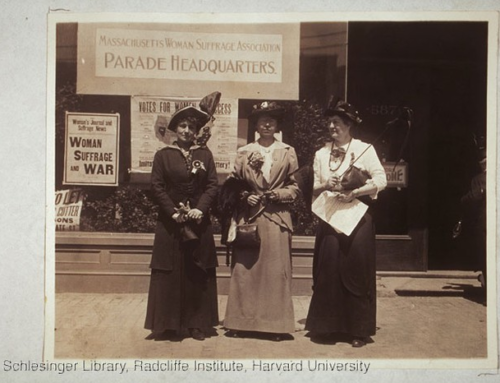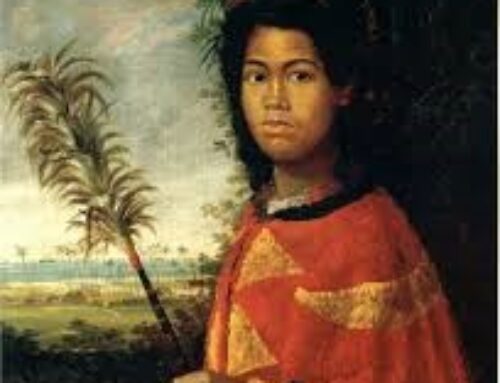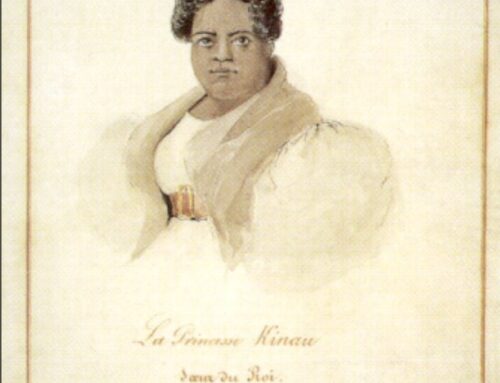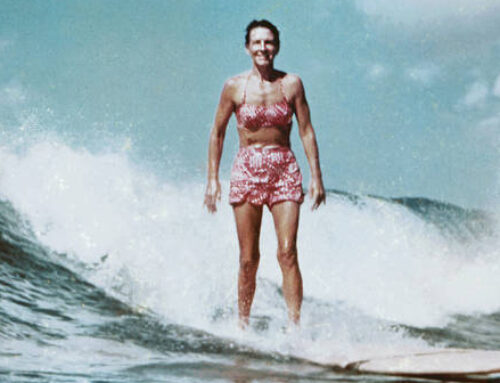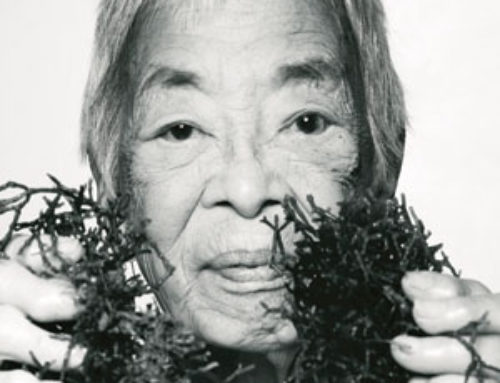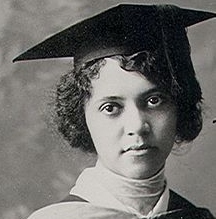
Alice Augusta Ball was born in Seattle, Washington on July 24, 1892. She was the third of four children born to Laura Ball and James Ball Jr. – a newspaper editor, lawyer and photographer. James Ball Jr. had followed in his father’s footsteps, Sir James Ball, who was famously known for his work in photography and as the first African American in the United States to learn daguerreotype, a process of printing photographs on metal plates.
Alice Ball moved briefly to Oahu in 1903 attending Central Grammar School (now known as Central Middle School). She returned to Washington in 1905 and continued her education achieving degrees in Pharmaceutical Chemistry (1913) and Pharmacy (1914) from the University of Washington. She also went on to publish several papers in the Journal of the American Chemical Society.
In 1915, Alice Ball became the first woman and first African American to graduate from the College of Hawaii (now known as the University of Hawaii) where she earned a Masters of Science in Chemistry. Ball was then offered an instructor position in the School of Chemistry at the College of Hawaii, once again breaking new ground as the first African American and first woman professor in the College of Hawaii’s chemistry department.
During her brief career at the College of Hawaii, Alice Ball successfully developed an injectable treatment for Hansen’s Disease (Leprosy) created from the medicinal properties of the oil from the Chaulmoogra Tree. Alice Ball was also the first person to successfully develop a water-soluble, injectable form of chaulmoogra oil that was used for decades to relieve the symptoms of Hansen’s disease (leprosy).
While completing her master’s thesis, The Chemical Constituents of Piper Methysticum; or The Chemical Constituents of the Active Principle of the Ava Root, Dr. Hollmann, Assistant Surgeon at Kalihi Hospital in Hawaii where new Hansen’s disease patients were sent, asked Alice Ball to help him isolate the active agents in chaulmoogra oil. In a short period of time, she accomplished what many researchers, chemists, and pharmacologists working around the world for hundreds of years had not been able to do.
Ball was interested in providing a treatment for the ongoing outbreak of Hansen’s Disease that swept through Hawaii from the early 1800’s to late 1900’s. Due to concern over the potential impact of Hansen’s on the native Hawaiian population, the Legislative Assembly passed the “Act to Prevent the Spread of Leprosy” in 1865. Persons with the illness or suspected of carrying it were to be quarantined to the designated “remote and fairly inaccessible” Kalaupapa Peninsula in Molokai in which they were expected to live off the land. Not until 1919 did those at Kalaupapa receive adequate treatment, later known as the Ball Method. By 1924, the infected patient population had diminished and those at Kalaupapa were allowed to return home to their families and communities. Quarantine Law was not abolished until 1969.
Alice Ball died suddenly at the age of 24 on December 31,1916. She had become ill during her research and returned to Seattle for treatment a few months before her death. The cause of her death is unknown with a 1917 newspaper article from the Pacific Commercial Advertiser suggesting that the cause may have been chlorine poisoning due to exposure that occurred while teaching a laboratory.
Alice Ball’s legacy lives on. In 2000, the University of Hawaii honored Ball by mounting a bronze plaque in her honor on the only Chaulmoogra Tree on the UH-Manoa campus. That same year, the former Lieutenant Governor of Hawaii, Mazie Hirono, declared February 29 “Alice Ball Day” which is now celebrated every four years. In 2007, the Hawaii Board of Regents honored Ball with a Medal of Distinction. “We are incredibly proud of Alice Ball and are grateful to the people, many within our institution, who worked so hard over these past decades to research and bring forward her remarkable history and accomplishments after so many years,” said David Lassner, 15th president of the University of Hawaii system.
Sources
Biography. (2020, January 15). Alice Ball Biography.
https://www.biography.com/scientist/alice-ball
Collins, Sibrina Nichelle. Alice Augusta Ball: Chemical Drug Pioneer. (12 May, 2016.) https://scientificwomen.net/women/ball-alice-121.
Moore, Jacqueline. (2000). University of Hawaii at Manoa Library. https://manoa.hawaii.edu/library/about/organization/artwork/alice-augusta-ball-1892-1916/
National Park Service. (2015, February 28). Brief History of Kalaupapa.
https://www.nps.gov/kala/learn/historyculture/a-brief-history-of-kalaupapa.htm
Pennie Moblo, ( 1999). “Ethnic Intercession at Kalaupapa Leprosy Colony, 1871-1887”. Pacific Studies Vol. 22, no. 2. https://en.wikipedia.org/wiki/Kalaupapa_Leprosy_Settlement_and_National_Historical_Park#cite_note-intercession-7
Scientific Women. (2020). History of Scientific Women: Alice Ball. https://scientificwomen.net/women/ball-alice-121
University of Hawaii Foundation. (2017, February 21). A Woman Who Changed the World. https://www.uhfoundation.org/impact/students/woman-who-changed-world
University of Hawaii News. (2007, February 23). https://www.hawaii.edu/news/2017/02/23/alice-ball-scholarship-

